On our first day at the Korea Wall, a Basque Country “local’s crag” that happens to be stacked with completely badass 30-meter resistance routes, it was hotter than a Tennessee hippie’s taint at Bonnaroo—and nearly as humid, too.
Plus, everyone in my crew—Adam “Brams” Long, Lindsey Tjian and Joe Kinder—were all still feeling depleted from both jet leg and partying all night, Spanish-style, at Chris Sharma and Jimena Alarcon’s wedding 36 hours earlier.
“Oh, dude, I can still smell the booze in my sweat!” said Bram Stoker after lowering down from a techy 5.12a, the easiest route at Korea.
“Me too,” I said, trying not to puke.
“It’s really hot out,” said Bramski.
“This is just the intro day. Only easy routes,” said Joe, qualifying that with, “like around 8a.”
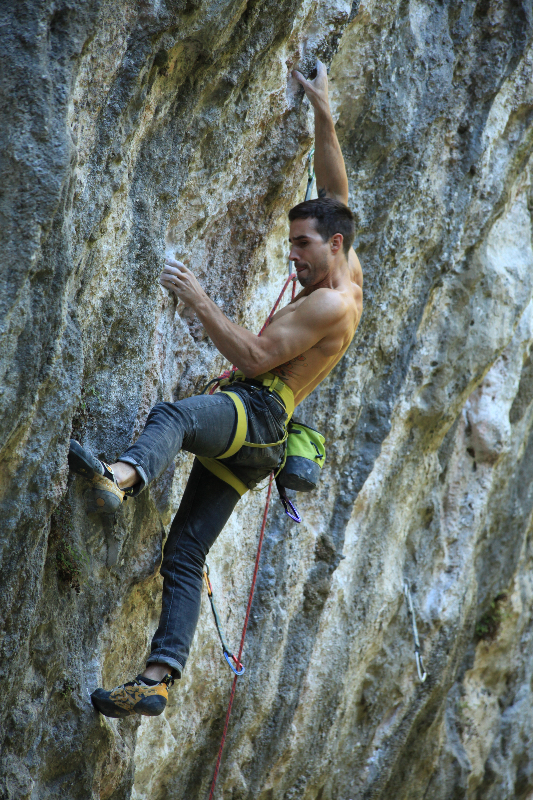
After sampling all the warm-ups, of which there aren’t many, Joe got on Mamba, the crag’s classic 8a—the one that a few of the strongest locals use for warm-downs, while most others gang-bang it as their project. This route, like all the others at Korea, is stiffly graded. It would be 8a+ anywhere else, even Rifle, which has gotten softer than baby shit in recent years (but that’s another story altogether).
On his first try, Joe made big links, but no OS. The upper crux, right before the anchors, is nails.
“You guys will love this one!” Joe exclaimed. “It’s badass!”
Even though it was as hot as balls, Joe was stoked out of his mind just to be climbing outdoors. He had just dedicated the last three months of his life to training—climbing indoors on plastic; mostly hangboarding and campusing.
Joe had been training with his fellow Black Diamond athletes Dan Mirsky and Sam Elias. The trio trained like actual professional athletes, too, foregoing the normal pro-climber routine of spending mornings on Facebook, afternoons fucking around with some V-double-digit boulders, and evenings abusing a variety of substances and raging Pearl Street till 2 a.m. They spent six hours a day, six days a week, getting whipped into shape by Justen Sjong and Kris Peters, two of the best climbing trainers in the country. They met with nutritionists, who prescribed healthy diets. They learned new crucial breathing techniques. And they even met with a sports psychologist.
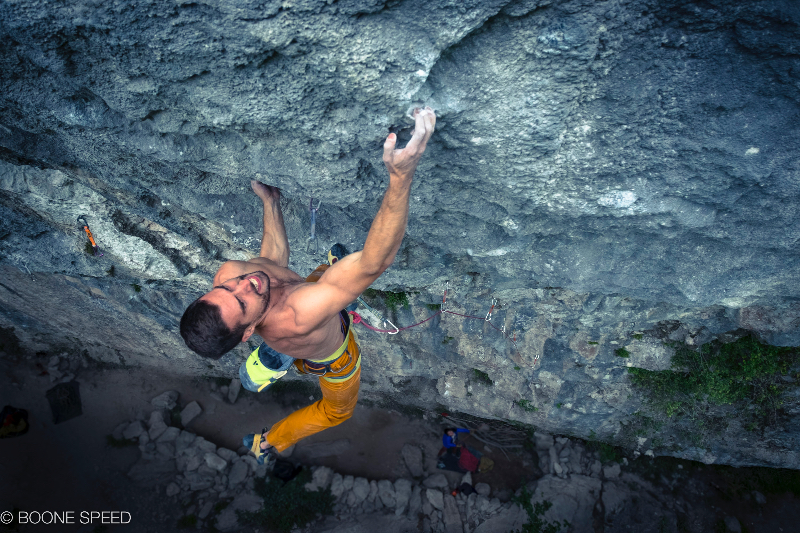
In the last 20 years that Joe has been a climber, this was the first time in his life that he had actually trained. For real.
For the last three days since we arrived in Spain, all Joe could talk about was getting out to the cliffs. He missed real rock, but he was also jonesing to cash in on the dividends of his hard work in the gym.
On his second go on Mamba, he climbed right up the crux, hit the right-hand gaston, then fell matching the hold.
“Oh, come on!” he screamed. “Where’s the pay-off?”
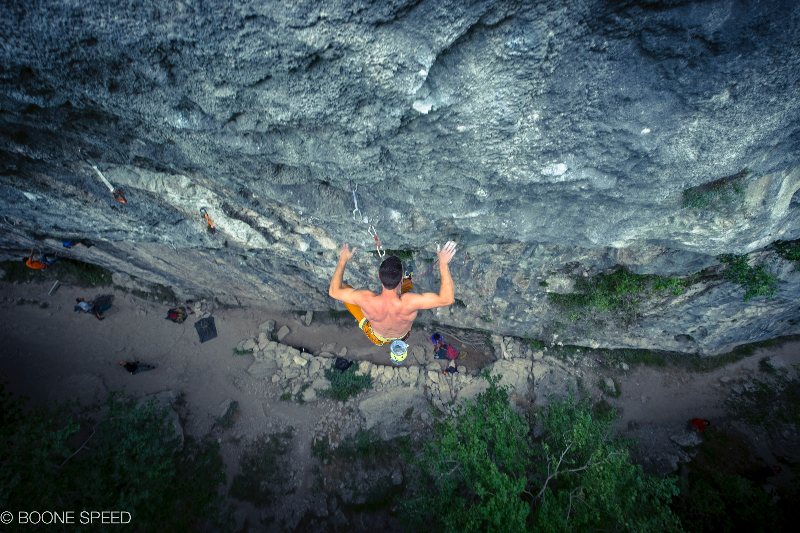
I felt bad for my friend, because I knew he had been working really hard. But he just fell; and sometimes that shit happens in climbing.
But … really, I shouldn’t have felt bad. First, because he easily did Mamba on his next try, right before dark. But mostly, I shouldn’t have felt bad because it would end up being one of the few times during our recent trip to Spain that I saw Joe fall when he was expecting to send. Over the next two months, Joe went on a complete tear, clocking 8c after 8c after 8c+. In fact, all told, he climbed 10 routes rated 8c or harder, usually within only a handful of tries.
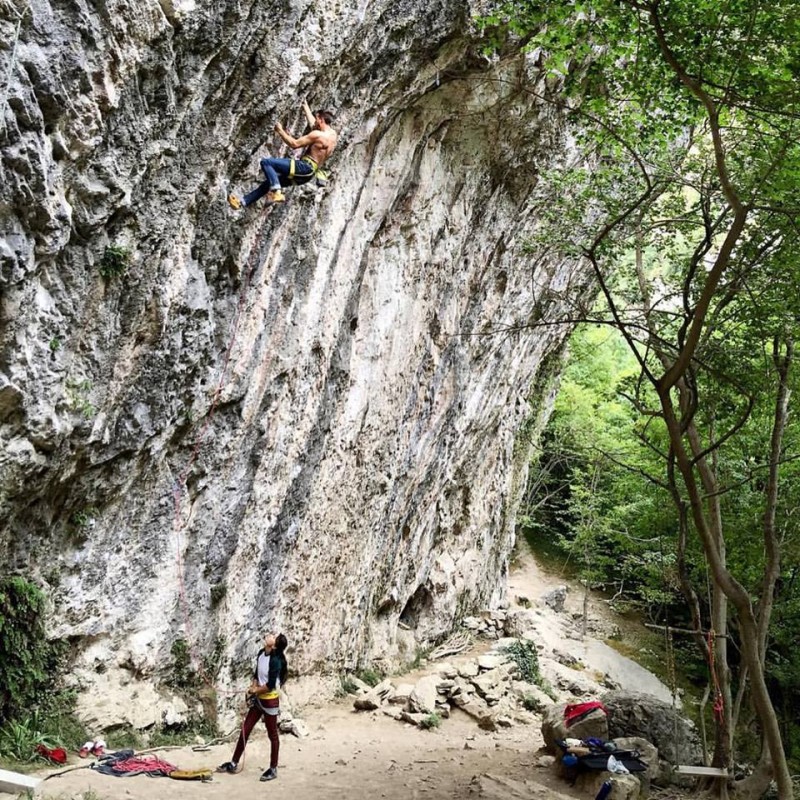
On that second week of our trip, it seemed like Joe was climbing an 8c a day. It was really inspiring to watch my buddy climb so well, too. I’ve climbed with Joe a lot over the years, and on this trip he really seemed like a sharper, quicker, stronger version of himself. No hesitation. Fast and decisive climbing. Remembering beta quickly. Executing moves perfectly. No jitters, no doubt. All flow.
The numbers are meaningless—after all, these were routes that someone like Adam Ondra might onsight. But so what? To be around a guy who, at 35 years old, is climbing as closely to perfectly as he ever has before in his life—that was some really cool shit to witness.
I ended up leaving Spain early, and I wish that I could’ve joined Joe and Lindsey at Villanueva de Rosario, where Joe really kicked it into high gear with five 5.14c’s in just a few weeks time. Now that he’s back home (for a bit), I thought it’d be cool to hear Joe’s reflections on training, sending and Spaining.
Would you say that, prior to this year, you’ve been in a plateau, climbing-wise?
I guess I have not been really trying to excel or break certain barriers, so in my mind I was never really plateauing. But at the same time we all have goals and I have specific goals I’d like to reach before I’m too old to even consider them. So, I guess for as long as I’ve been climbing I’ve been in some sort of a plateau, if you want to look at it that way. I mean I’ve never trained to get stronger and I’ve never trained to reach any certain goals.
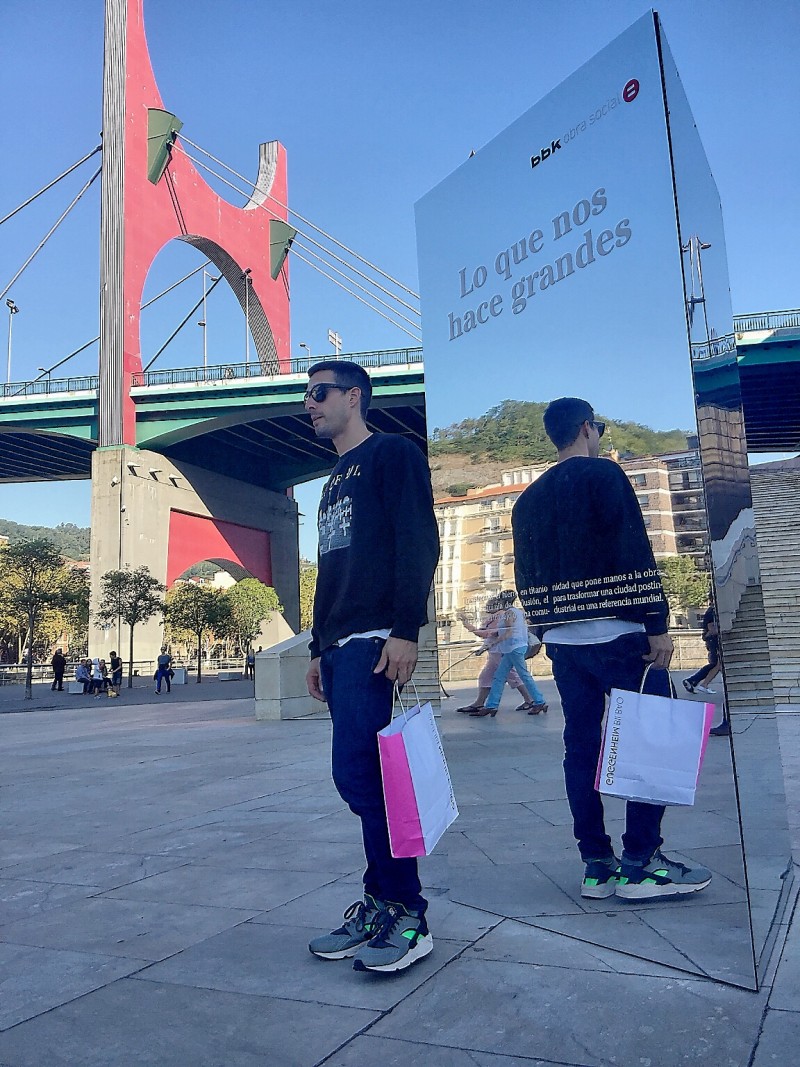
What were you most proud of doing on this trip?
I guess I would be most proud of the fact that I climbed all of these routes quickly. It never felt like work, or any sort of struggle, to complete them. Basically, I was constantly having a good time and at the end of every single day I was happy and excited for the next day.
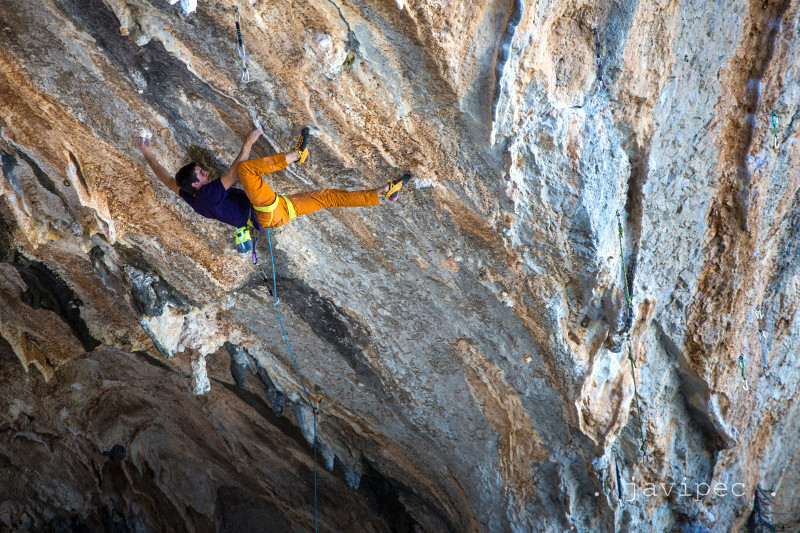
Why were you motivated to train?
We all have certain routes that keep us stoked and give us a reason. I have a few that I’ve revisited throughout the years, and I always tried them with the same level of fitness. I’d go to these routes with the same mentality and fitness, thinking the results would magically be different. But in reality, there was no chance unless I leveled up.
So, my motivation was to climb my next-level projects. If it works great, if it doesn’t work, I know I’ll be even closer than I was before.
After training, I see climbing in a different way now, and I wish I had picked up training a long time ago as I believe I could’ve accomplished many of my goals by now.
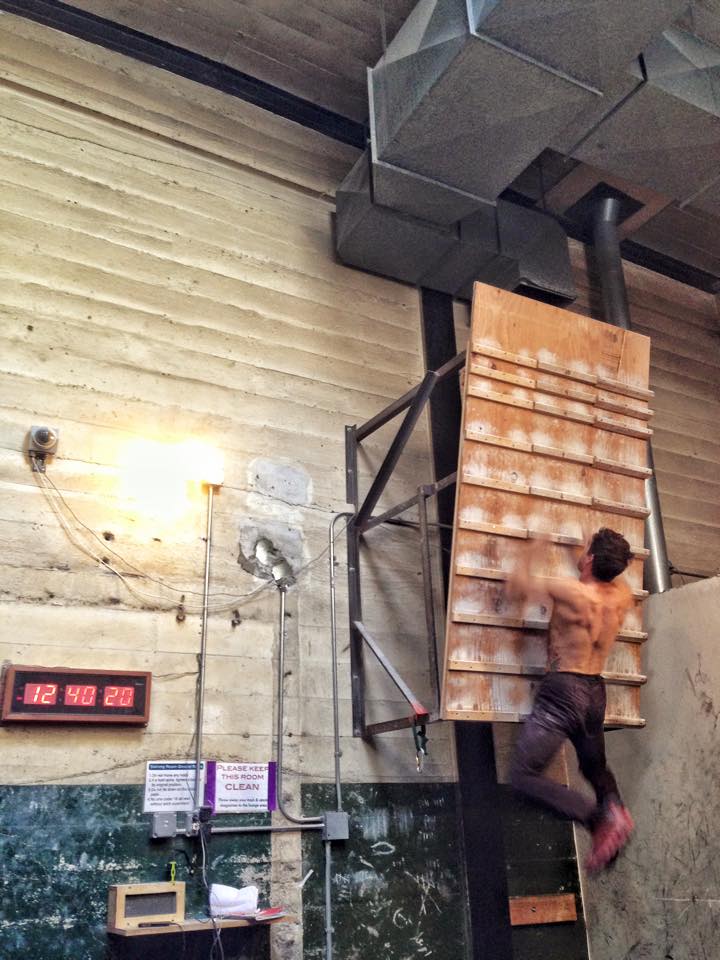
What did you like the most, and least, about training?
What I liked the most about training was the progress and seeing your gains. I think what I liked least was the pain and having to deal with certain group dynamics that create a major distraction. But that’s life and that’s what makes things interesting, right?

What’s the best advice you got, or lesson you learned, during your training program?
I would say to partner up with somebody. I know some folks do well alone, but, personally, I think having someone else training alongside you is really important. Ideally, your partner can hold you accountable, which is really helpful. Perhaps they can be stronger than you and guide you through the process or the exercises. Mentally, training is really difficult,. It’s so easy to quit and give up. It’s so damn easy! But you really need to persevere and follow through with it, and that’s probably the hardest but most important part.
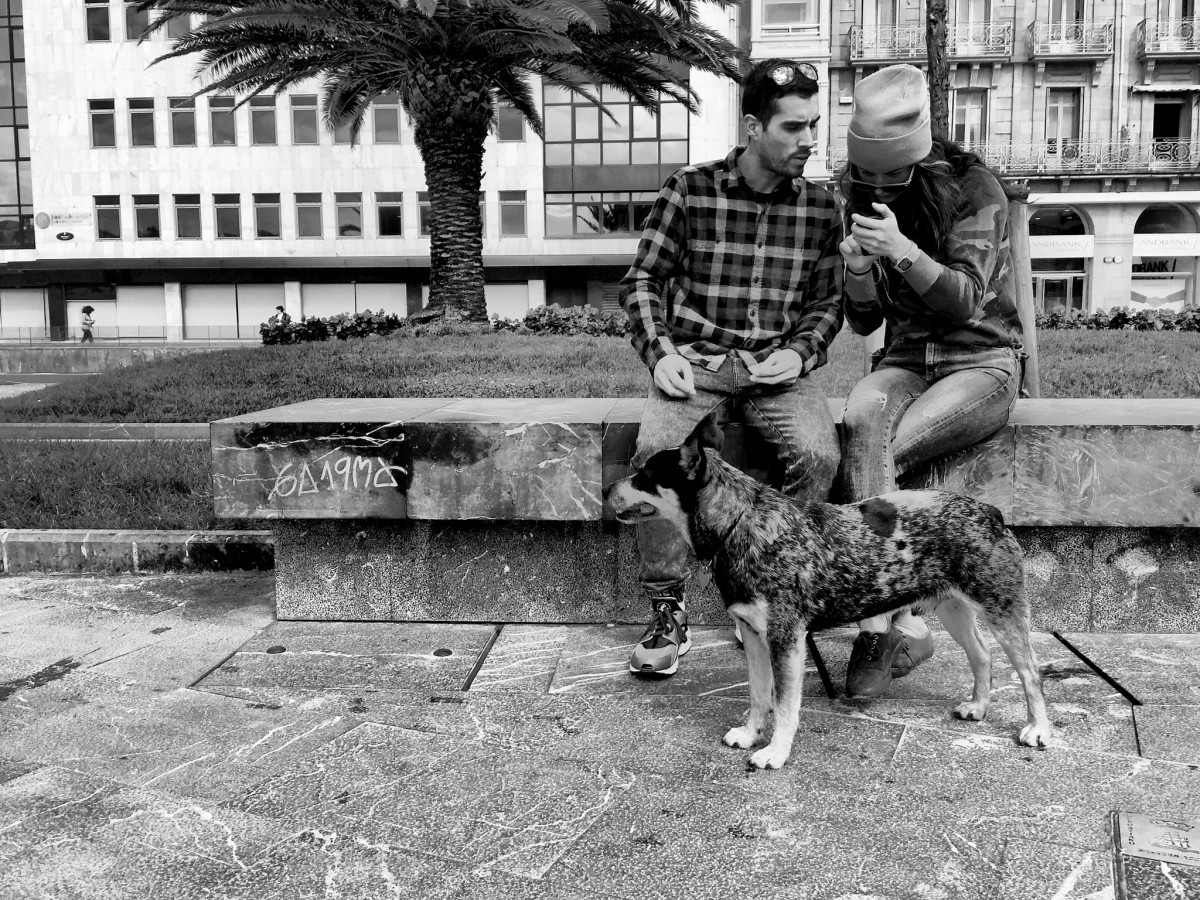
Does age matter in climbing?
I think that if you prepare yourself well and your body is conditioned to a certain degree, then your age should really not matter. One of my biggest inspirations is Dani Andrada. He is 40 years old and he is climbing just as well as he did when he was younger. To be conditioned could take 20 years or it could be immediately, it simply depends on who you are and how you function.
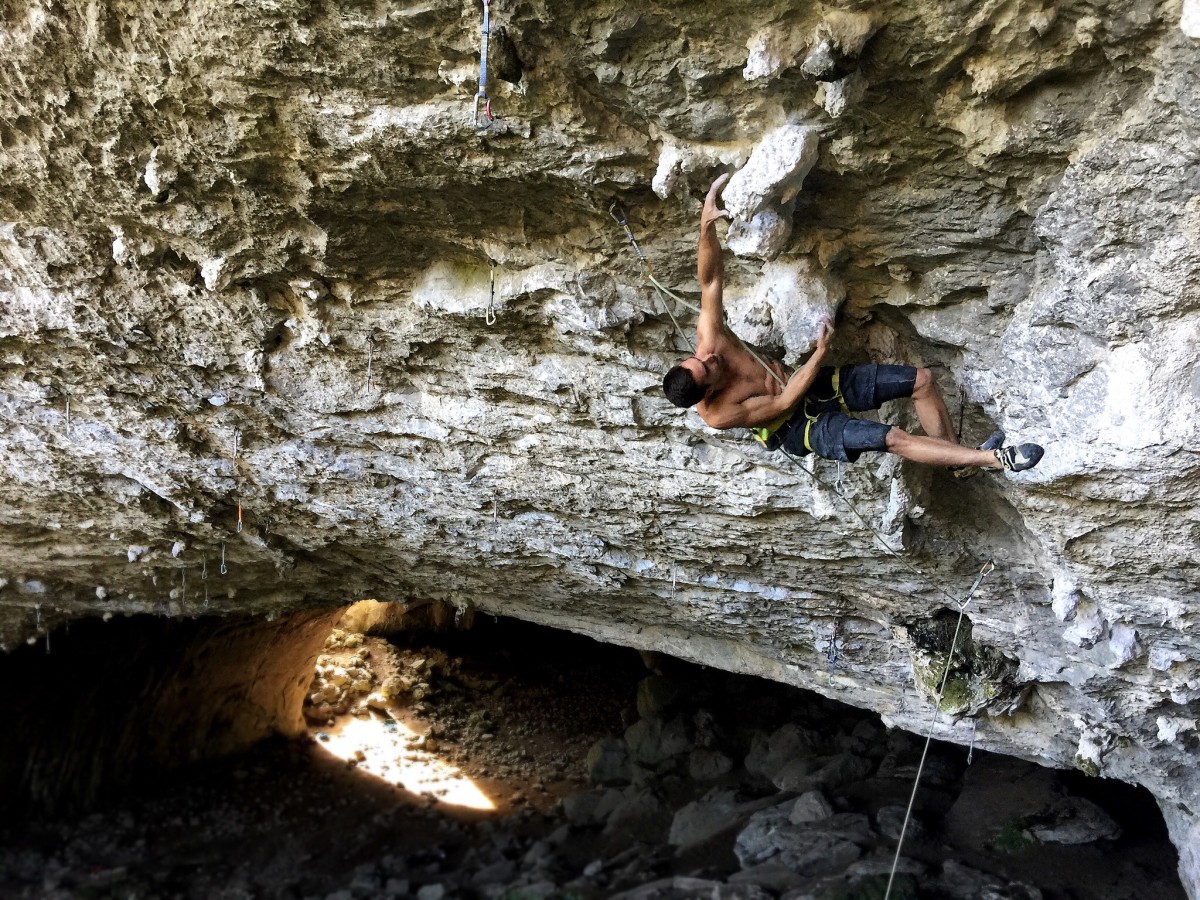
Training can only take you so far. Technique and skill have to play a big role in climbing, too. Any thoughts on this idea?
I would say a lot of that has to do with years of climbing experience. You could be a strong and a super-fit person, but not know how to climb well. The amount of experience you have climbing goes a really long way. In some ways I think you are still a baby if you have only been climbing for 5-6 years. Maybe after 10 years of climbing outside, you will be someone who can read rock, speak its language and integrate fluidly. Training can only take you about 20% of the way. That’s something that can’t be taught in the gym. It’s something that can only be learned by doing it.
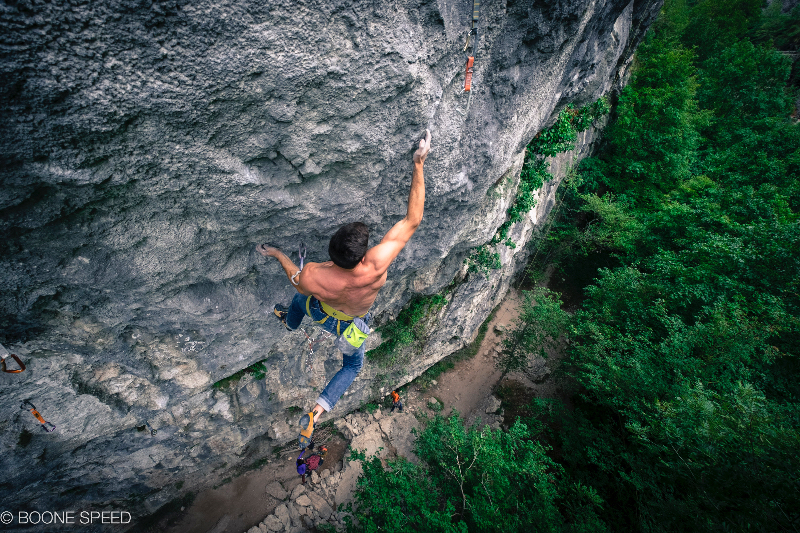
Do you think climbing style is important, and whose style do you find inspiring? Do you have your own climbing style?
For sure everybody has a different style and there are always climbers that I look up to for inspiration and motivation—whether it be their decisions they make, or how their body moves on the rock. Like I said, I really admire Dani Andrada— not just for his climbing style but for his entire lifestyle and commitment.
Also I think Daniel Woods has an amazing vice-style that’s very unique in terms of his strength from fingertips to toes. And then there are people like Mike Fusilier, who has a brute and bulldozer-like style. I try to emulate those guys sometimes but at the end of the day they are simply people who inspire me and make me want to climb harder, smarter, stronger and better. I guess I have my own style, but I honestly don’t know what it is. My only hope is that it could perhaps inspire a young climber out there—or anyone for that matter.
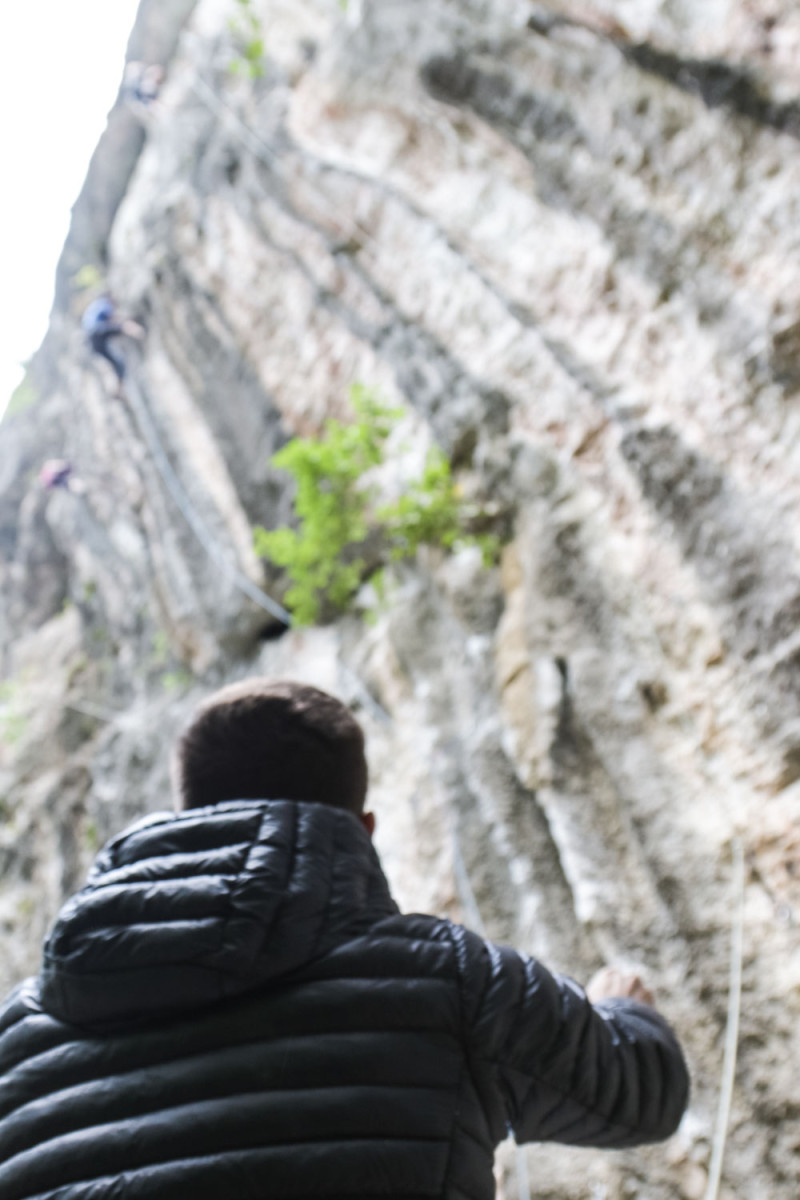
What are your goals for climbing the rest of the year and in 2016?
I have about four different routes that are all next-level for me and they are my goals. I guess I don’t really want to boast too much publicly about them, as I really don’t need any pressure or expectations from anybody, including myself. This is the year for me to go and enjoy climbing and try to excel for me and nobody but me. Call it selfish and narcissistic, but after training and seeing a new open door I am really eager to push it and see what I can do.
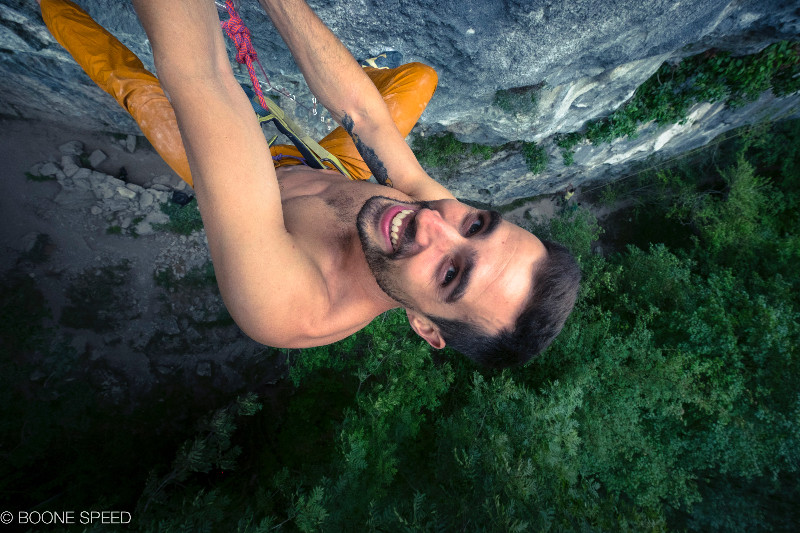
Thanks to Boone Speed and Javi Pec for the photo support.

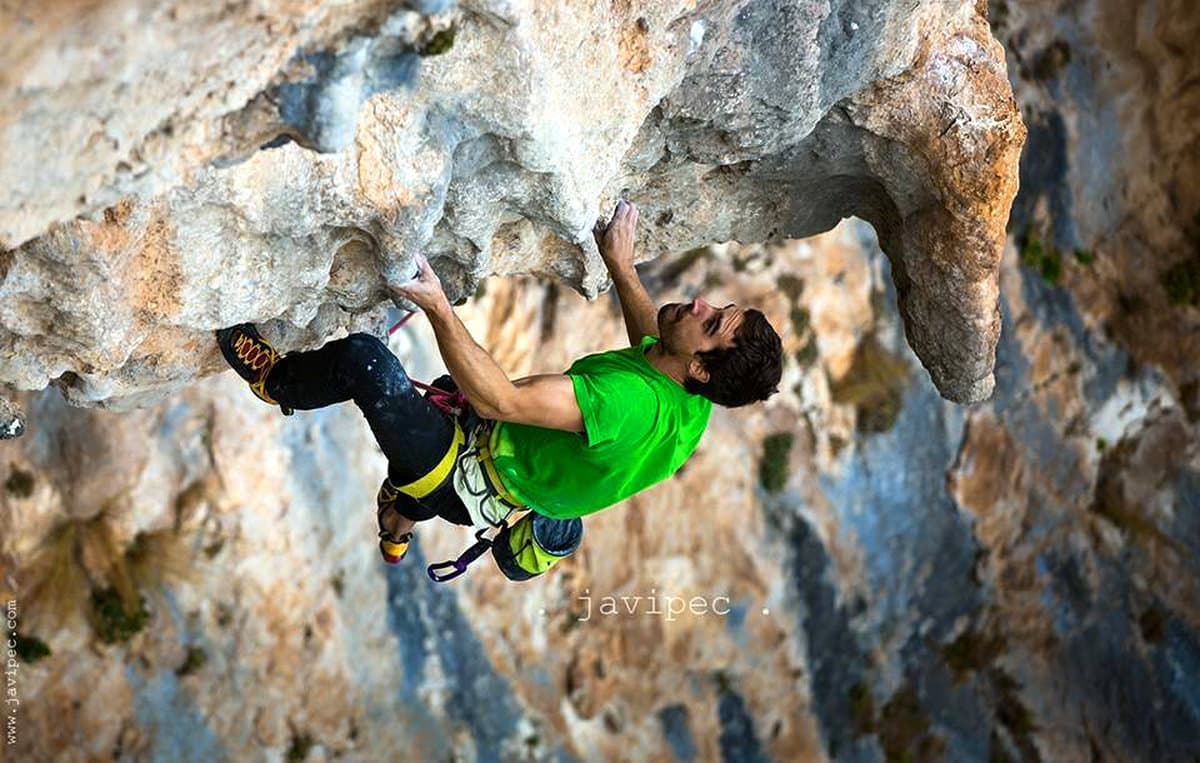


Training is key, great article! Really digging the Q/A with Joe Kinder towards the end too!